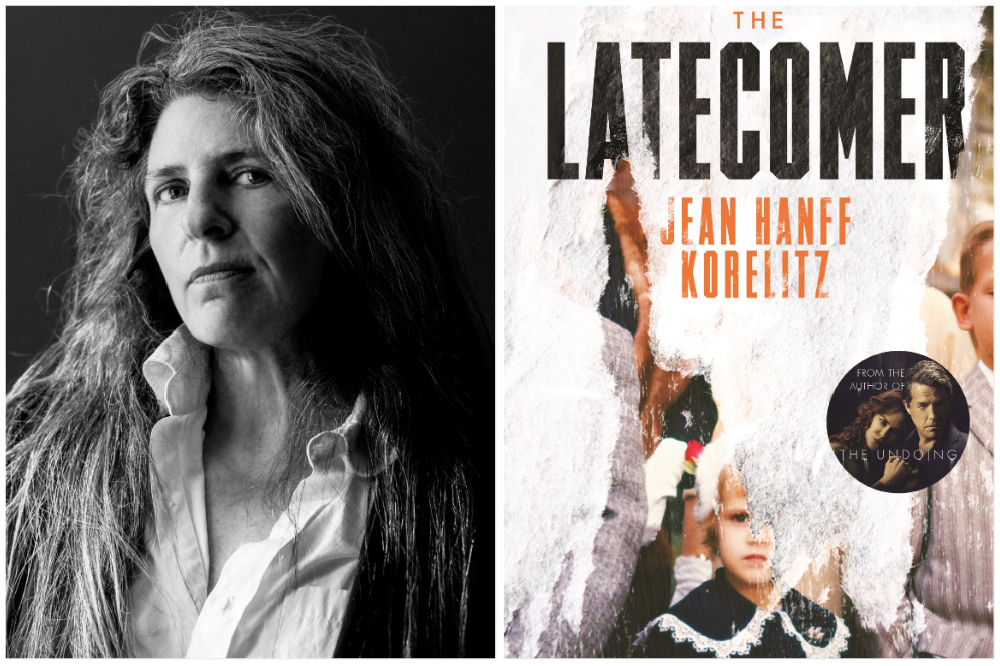Dear Molly,

Jean Hanff Korelitz by Michael Avedon, The Latecomer
I was thinking of you the other day, when I was appearing at the Festival of Writing and Ideas at Borris House in County Carlow. The festival took place all over the grounds and the writers had the run of the magnificent 18th century house itself, though we tended to congregate at the very long table in the dining room, watched over by ancestral portraits of the Kavanagh family. I kept saying, to anyone who would listen, “I feel as if I’m in a Molly Keane novel!”
Do you remember when I came to interview you for The Paris Review at your daughter’s flat in London? It was the late 1980s and I was a young writer, not yet published. I was fully in awe of you, something you kept deflecting by raining down scorn upon your own novels. (“Oh, did you read that?” I remember you saying at one point. “That was an awful novel.”) You were not capable of writing an awful novel, not even as a young writer yourself, not even with virtually no formal schooling, as befit an Anglo-Irish girl who was supposed to care only about dresses, balls, and horses. Legend has it that you hid your identity as the author of 11 novels published from 1928-1956, choosing a pseudonym – M. J. Farrell – from a pub sign you passed while hacking home after a hunt, and that none of your friends had any idea that Mary Nesta Skrine – or Molly Keane after your 1938 marriage to Bobby Keane – was the author of the books that were so popular in your set. It all remained a great secret until – according to another legend – Dame Peggy Ashcroft was visiting you in Ireland years later, caught a cold and asked for something to read in bed. You gave her the manuscript of Good Behaviour, your first novel in many years, which had already been rejected by London publishers and consigned to a drawer. And it was…well, it was Good Behaviour, a brilliant dark comedy, an instant Irish classic, fated for the Booker Prize short list and beloved by anyone who has ever read it. I am personally grateful to Peggy Ashcroft for insisting you try again to publish it.
Now that I’m, sort of, an “older writer” myself, I find myself thinking about your odd literary career; how strange it must have been to enjoy – if one can really enjoy – a pseudonymous and secret success for many years and then feel one’s time has passed, only to come roaring back with a trio of brilliant, mature novels -- Good Behaviour (1981), Time After Time (1983), and Loving and Giving (1988) – and the joyful vindication of having Virago re-issue those early M. J. Farrell novels in their signature dark green covers. (I have them all, of course, along with your non-fiction books on cooking and hunting.) Even so, you felt compelled to denigrate your work, bemoaning your lack of education and wondering how you could be considered a real writer.
Molly, you so were a real writer. You absolutely conveyed your world to those of us beyond its borders, and so effectively that I was in a perpetual swoon in that Borris House dining room (and sneaking around the upstairs hallways, imagining your tragic governesses and skulking servants and spoiled daughters and sons into those bedrooms). You were a lesson in perseverance and the triumph of wicked wit, and a reminder to those of us who might not have experienced “success” at the outset that there were good things ahead if we kept working, kept growing, kept taking that chance on the blank page.
Our long ago Paris Review interview was commissioned by editor Mona Simpson, a novelist who knew your worth, but it was later killed by George Plimpton, who plainly did not. That was heartbreaking, and I wondered if you interpreted it as proof that you were not a good enough writer for the lofty Paris Review. When my husband and I came to visit you a few years later in Ardmore, you didn’t mention it, and I was grateful, but I always hoped to make it up to you. Perhaps I’m doing that now: too little and too late, but thoroughly heartfelt, I assure you. You were the real thing, Molly Keane, and one of the best at that.
Jean Hanff Korelitz

